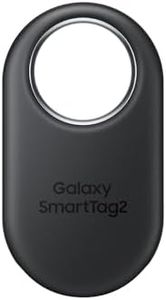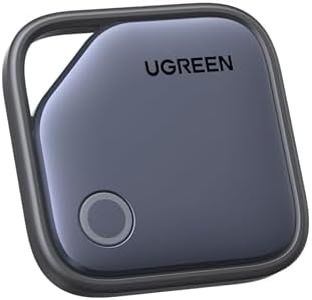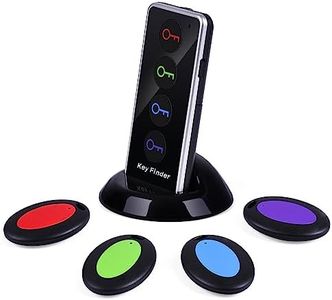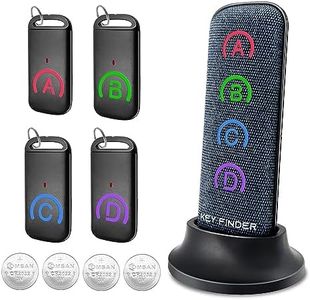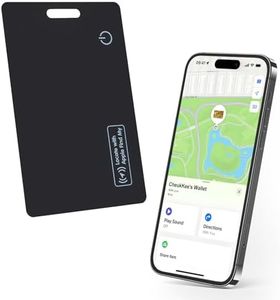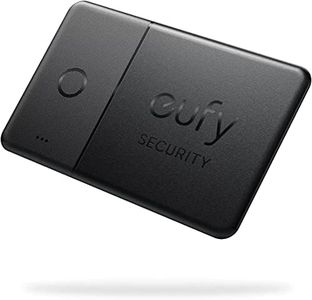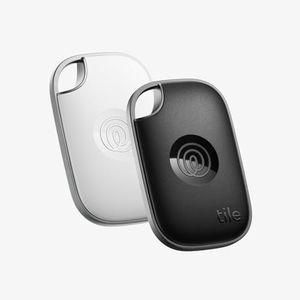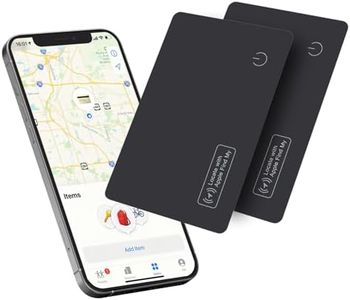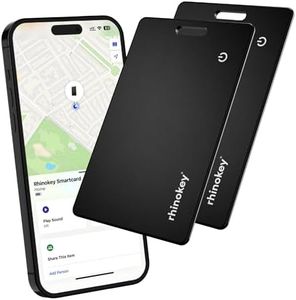We Use CookiesWe use cookies to enhance the security, performance,
functionality and for analytical and promotional activities. By continuing to browse this site you
are agreeing to our privacy policy
10 Best Wireless Key Finders
From leading brands and best sellers available on the web.Buying Guide for the Best Wireless Key Finders
Choosing a wireless key finder can be a real lifesaver for anyone who frequently misplaces their keys, wallet, or other small items. These handy gadgets help you quickly locate lost items by using wireless technology, such as Bluetooth, to make them beep, flash, or show their location on a map via your smartphone. Picking the right key finder comes down to understanding which features match your daily habits and environment, so you can balance convenience, range, and battery life.RangeThe range indicates how far the key finder can be from your phone or the remote and still connect. Typically measured in feet or meters, the range varies from short distances suitable for home use to longer ranges for misplaced items in larger areas. Short ranges (up to 50 feet) work well if you usually lose things in small rooms, while medium ranges (50-150 feet) cover larger homes, and long ranges (over 150 feet) help if you often misplace items in bigger spaces or outside. Decide where you're likely to lose things and select a range that matches—there’s no need to overpay for a long-range model if you only need it inside your apartment.
Alert Volume and TypeThis is how loud or noticeable the key finder’s alert is when you activate it. Louder alerts are good for noisy environments or if there are walls and furniture blocking the sound, while softer alerts may suffice for quiet places. Some also have flashing lights, which can help you spot items in the dark. Think about where you usually lose your keys—if it’s often buried in bags or under cushions, a louder or flashing alert will be more effective.
Battery Life and Power SourceBattery life shows how long the device will work before needing a replacement or recharge. Some use coin batteries that last up to a year, while others have rechargeable batteries that need more frequent attention. If you want something low maintenance, look for models with longer battery life or easy-to-replace batteries. If you don’t mind keeping another device charged, a rechargeable one might suit you. Consider how much you want to think about the device once you start using it.
Size and DesignThe size and shape affect how comfortably the finder fits on your keys, wallet, or within bags. Smaller and lighter models are less noticeable and easier to carry, while larger ones may be harder to misplace but could be bulkier on your keychain. Think about where you plan to attach or store the tracker and pick a size that feels right—bulky trackers could be annoying in slim wallets, while tiny ones might get lost if you’re tracking something big.
App Compatibility and UsabilityMost wireless key finders work with an app on your phone. Compatibility with your device’s operating system (iOS or Android) is essential, and some apps offer extra features like notifications when you leave an item behind or mapping where you last had your keys. If you love extra features and an easy, intuitive experience, explore what the app can do before buying. Make sure the app suits your preferences and works with your smartphone.
Two-way Finding and Additional FunctionsSome key finders allow you to find your phone with the key finder itself, not just locate your keys with your phone—this is called two-way finding. Others may offer things like voice assistant support or out-of-range alerts. If you often misplace your phone or want more than just a basic locator, look for these additional functions. Choose based on the kind of daily forgetfulness you deal with most.
